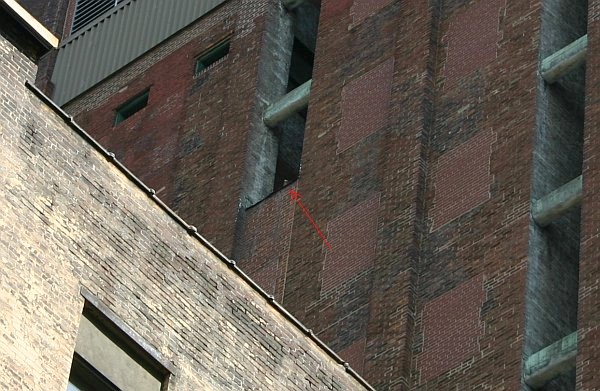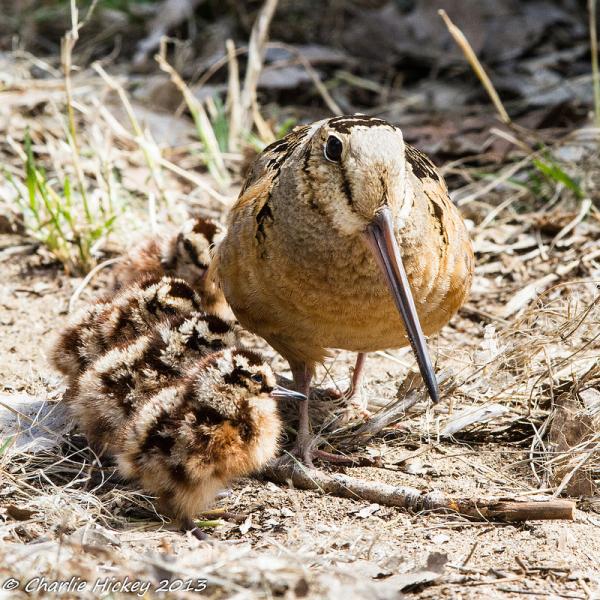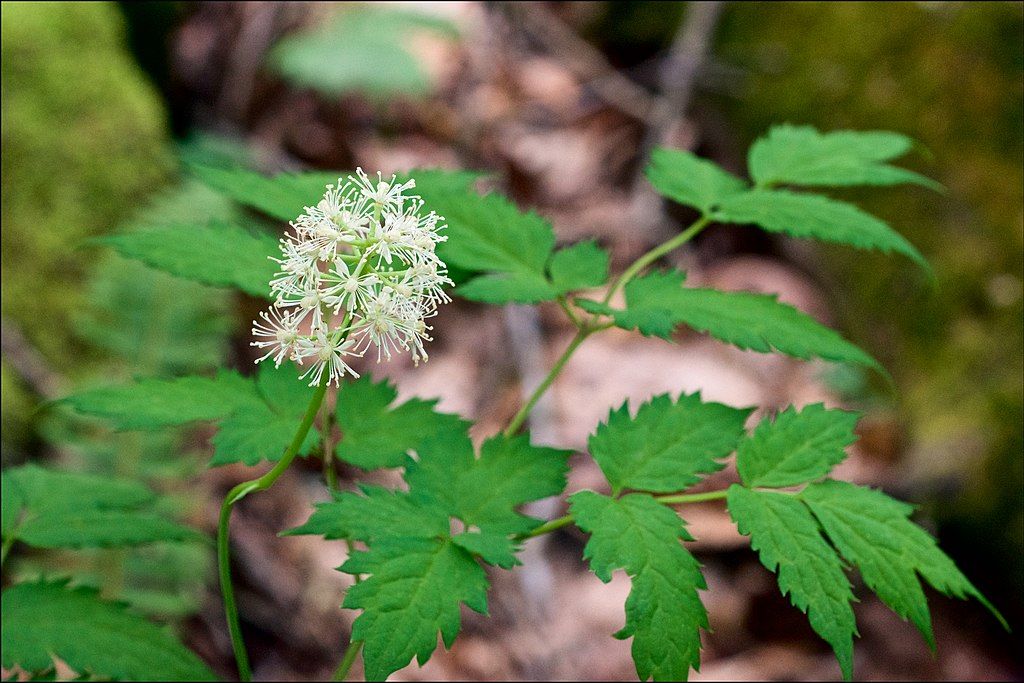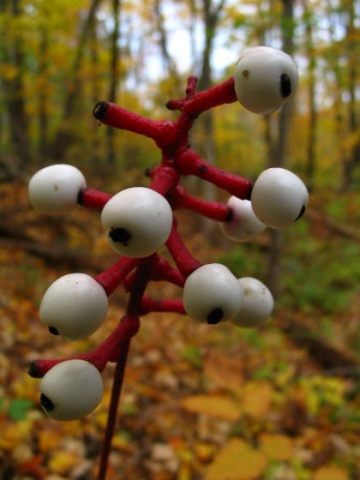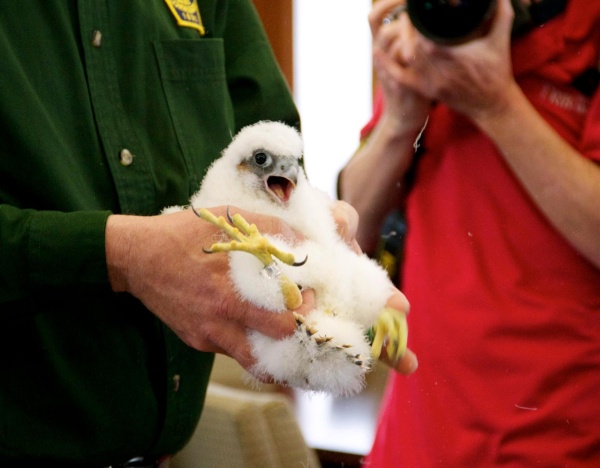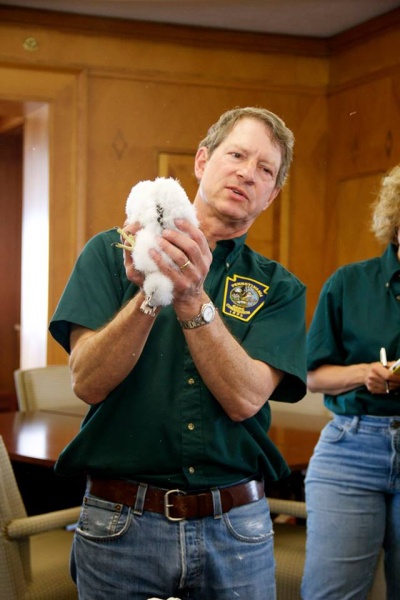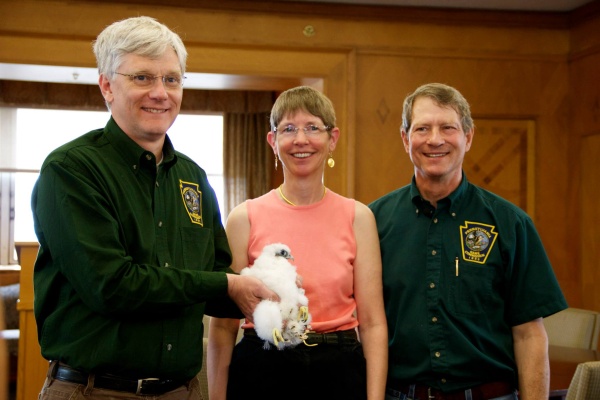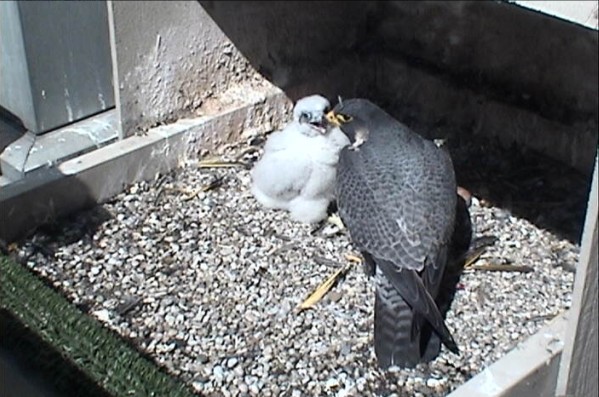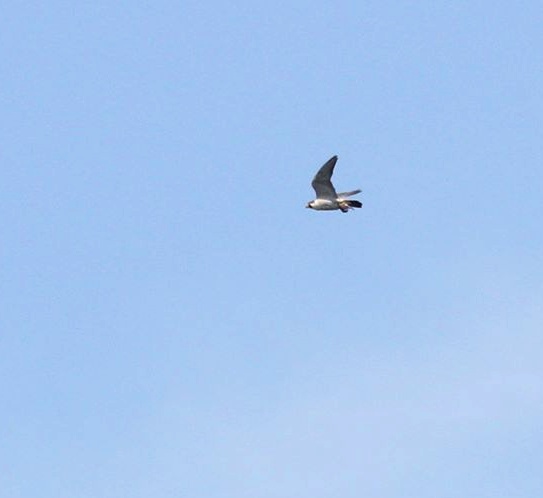
After three disappointing banding attempts at Pittsburgh area bridges, Dan Brauning struck peregrine gold yesterday at the I-79 Neville Island Bridge, pictured above.
Last week he and Art McMorris brought back disappointing news from Tarentum, Westinghouse and McKees Rocks: solo abandoned eggs at Tarentum and McKees Rocks, and a single handicapped nestling with a poor prognosis at Westinghouse.
But yesterday was good. Dan found three peregrine nestlings at the Glenfield span of the I-79 Neville Island Bridge. The two males and one female chick are 22 days old.
Anne Marie Bosnyak and Laura Marshall monitor this site and were on the scene. When they arrived at 9:00am they saw both adult peregrines on the bridge and hunting in the vicinity. Around 10:00am Dan and PennDOT went under the bridge and walked the catwalk from Neville Island to Glenfield but found no peregrines. If there were baby peregrines on the bridge why weren’t their parents defending them?
On the way back to the Neville Island side Dan checked some additional nooks. One of the parents arrived with prey and was so stunned that humans were approaching her nest that she perched silently for a moment. Then all hell broke loose. Kak and attack! The noise signaled her mate to come quickly and he joined the fray.
Both adults are banded and now their chicks are, too. Dan was able to read the bands on the mother peregrine: black/red 62/H born in 2010 in Canton, Ohio. Ohio peregrine fans, this is Magnum, photographed by Jeff McDonald on New Year’s Day at Cork-Bocktown Rd.
The chicks are due to fledge on June 5 and they will need watchers! The only reason we know of this site is because a fledgling fell in the river last year and was rescued by boaters. Imagine if no one saw him! Stay tuned next week for information on where to watch and when. Earmark June 5-10!
Meanwhile in Beaver County…
After the I-79 Bridge banding, Dan met up with WCO Matt Kramer and confirmed that peregrines are not nesting at the Monaca-East Rochester Bridge as they have since 2007. Instead they’ve moved 1.25 miles downstream to the huge railroad bridge across the Ohio at Monaca-Beaver.

I’m surprised they moved but not surprised they chose this bridge. It’s the tallest in the area, has a long westward view down the river, and is perfect for nesting if you can stand the roar and thump of trains. Back in March 2008 several of us witnessed a territorial battle at this bridge.
Why didn’t peregrines move here earlier? Perhaps there wasn’t the proper substrate for making a scrape until now.
In any case, they’ve chosen an inaccessible spot near the top so their babies won’t be banded. Sneaky!
(photo of Neville Island I-79 Bridge from Wikimedia Commons. Photo of Monaca-Beaver railroad bridge by Kate St. John)
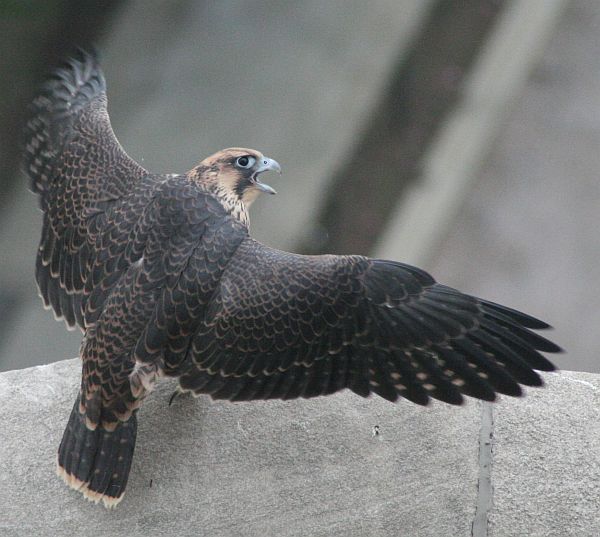 When young peregrines fly for the first time they’re specially equipped for their big adventure.
When young peregrines fly for the first time they’re specially equipped for their big adventure.

